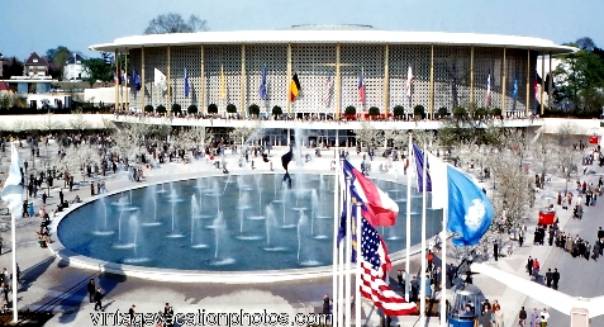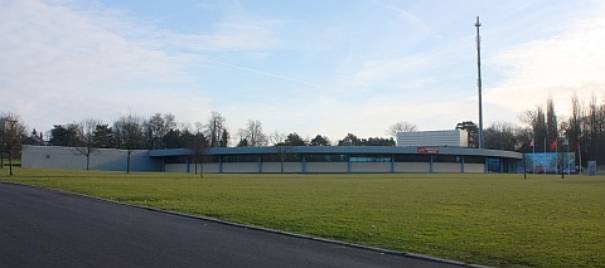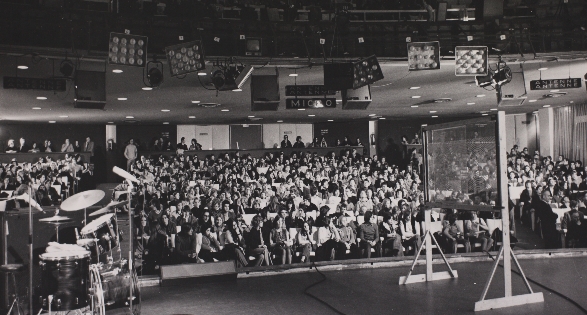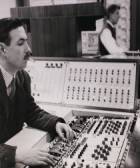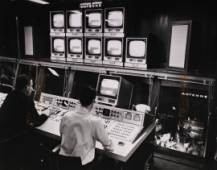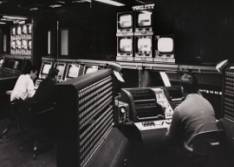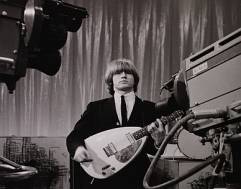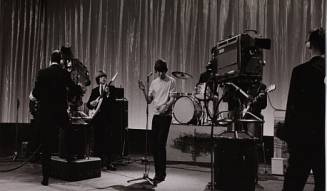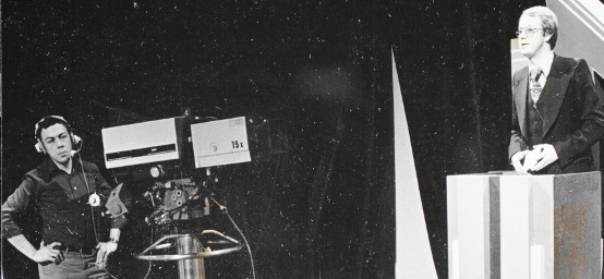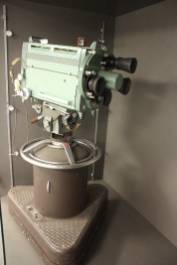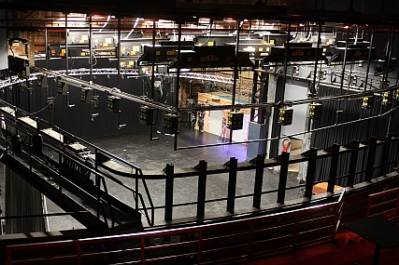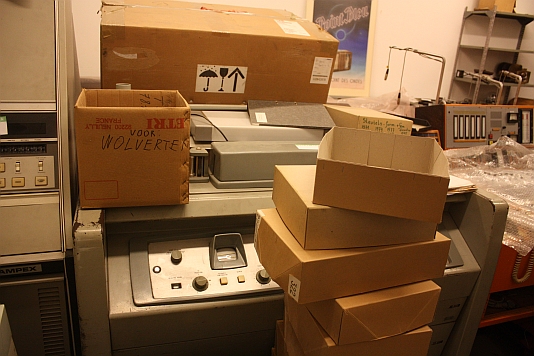|
End of an ERA : Belgian public broadcaster bides
farewell to American Theatre These
days moving vans drive on and off at the « American Theatre »
in Brussels, Belgium. They are clearing the building of props, equipment
and archive documents belonging to VRT, the Belgian Dutch language public
broadcaster, not to mention the collection of historic radio and TV
equipment from the “Omroepmuseum”. For
over 50 years VRT has a tv studio at this site. But why the name American
Theatre? What is so American about it? Well,
the building was part of the American pavilion at the 1958 Brussels
World’s Fair, which also gave us the landmark Atomium structure (see http://en.wikipedia.org/wiki/Atomium
). The
American pavilion was designed by Edward Durell Stone, amongst others
architect of the MOMA building in New York and
the Kennedy Center for the performing arts in Washington. The
American pavilion gave him fame; he even made the March 31, 1958 Time
cover (see http://www.time.com/time/covers/0,16641,19580331,00.html
).
The
American pavilion in 1958; photo
courtesy Vintage Vacation
Photos The
main building was round, in fact at the time it was the largest free
standing circular structure in the world. Measuring 105 m in diameter, it
consisted of a solid base topped with a glass and plastic superstructure,
26 m high, with an open atrium in the middle. (After the fair this top was
removed, only the base remained.) Inside,
visitors got a look at the American Way of Life, a glimpse of a promising
future for post war Europe, and of American technology. To be seen in
operation were among others, a computer (The IBM RAMAC 305, with a 0.004
GB disk storage capacity!), robotic arms, voting machines, and a color TV
studio! At that time even B/W TV was rather new to us; it took in fact
another ten years before Europe started color transmissions (Belgium in
1971). And we got a taste of hamburgers and hot dogs, soft ice, canned
beer, Pepsi and Coca Cola …
The
same building now. Only the base survived
Next
to it was another, smaller circular structure, the latest-technology
“American Theatre” which
seated 1150. It was full house every night, not surprising with top acts
like Harry Belafonte, Benny Goodman, Count Basie, Duke Ellington,
Yehudi Menuhin, the American Ballet Theatre, a Leonard Bernstein
musical, the Philadelphia Orchestra, various military bands,
etc. Finally
there was the Disney Circarama theatre, (360 deg. cinema screen) torn down
after the expo. In fact most buildings were temporary structures, often
disassembled and rebuilt somewhere else. Not
so the American pavilion : it was sold to the Belgian authorities for the
proverbial dollar. Not exactly having a good use for it, they in turn
leased the theatre (and later what was left of the pavilion) to VRT, the
Dutch language public broadcaster. (www.VRT.be
).
Audience
as seen from the set in the sixties;
photo courtesy VRT It
became its main show studio, at first operated with OB vans. From 1964 it
went equipped with its own kit, mainly supplied by the British EMI
company, then active in the broadcasting business. It had four EMI 203 B/W
4.5” image orthicon cameras and local film playback; VTR recording and
playback was by microwave link from the main building, some miles away,
later also from a VTR van, equipped with Ampex VR1100.
Audio
control, production switcher and lighting control in 1964;
photos courtesy VRT Famous
and notorious in its days was the Rolling Stones act in a youth program in
November 1964.
Brian
Jones surrounded – Stones with camera; photo courtesy VRT Copyright RR VRT
starting transmitting in color from 1971; the electronics was updated with
EMI 2005 Leddicon (same as Plumbicon) cameras. Contrary
to other cameras the tubes are aligned in a horizontal plane (versus
vertical in the Philips camera e.g.), giving a slender but wider look to
the camera, with an alleged increased sensitivity to the earth magnetic
field. Anyhow, the cameras were powered day in day out for better
stability.
EMI
2005 during rehearsal; photo
courtesy VRT In
the eighties, EMIs were replaced by IKEGAMI HK322 cameras, fitted with 30
mm diode gun LOC, excellent cameras, and the last of the tube breed. Later
VRT went for CCD (and 16/9) with the Thomson TTV1657. Over
time the studio couldn’t keep up matching possibilities offered
elsewhere, audience seating was not adequate anymore, talent facilities
were outdated, the floor area, even after being increased several times,
was not up to modern standards. (It is not unusual to find 2.000 sq. m
studios in Belgium, the largest I know measures 3400 sq. m!)
Left
: an EMI 203 from the collection. Right : the stage is awaiting the last
program This,
together with the increased heating and maintenance costs (the building
sits over a natural well requiring constant pumping for not flooding the
studio!) made VRT to leave the building after the present lease expires,
end of June this year. They will rent other studios on an “as needed”
base. Bad
news for the “Omroepmuseum”, our own broadcasting museum, dedicated to
the history of radio and TV broadcasting, preserving equipment at the
studio and transmitter side as well as consumer stuff. Our storage being
located in the building, we have to move as well. Fortunately,
VRT kindly offered us some space below their largest TV studio at
headquarters, (almost) enough to store TV equipment, and equally at
another location for radio related objects. Aided by moving professionals,
we have to relocate some 3500 odd items.
Moving
: there must be an AVR1 and a VR1000C here somewhere Well,
thus comes an end to the story of TV production at the American Theatre,
built to last for only six months, probably going to be demolished after
54 years. Unless someone else shows some interest? Jan
Cuypers Chairman Omroepmuseum
|
